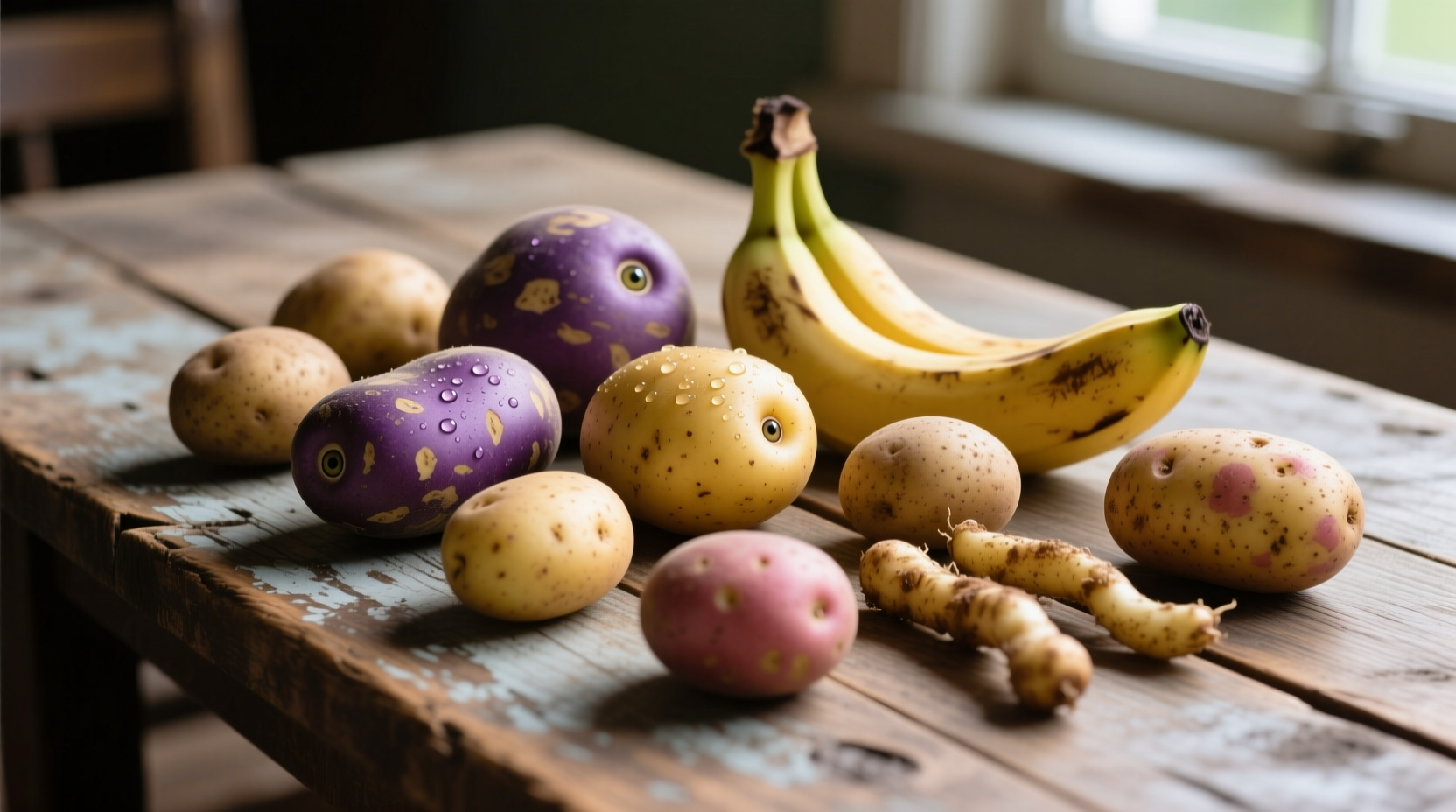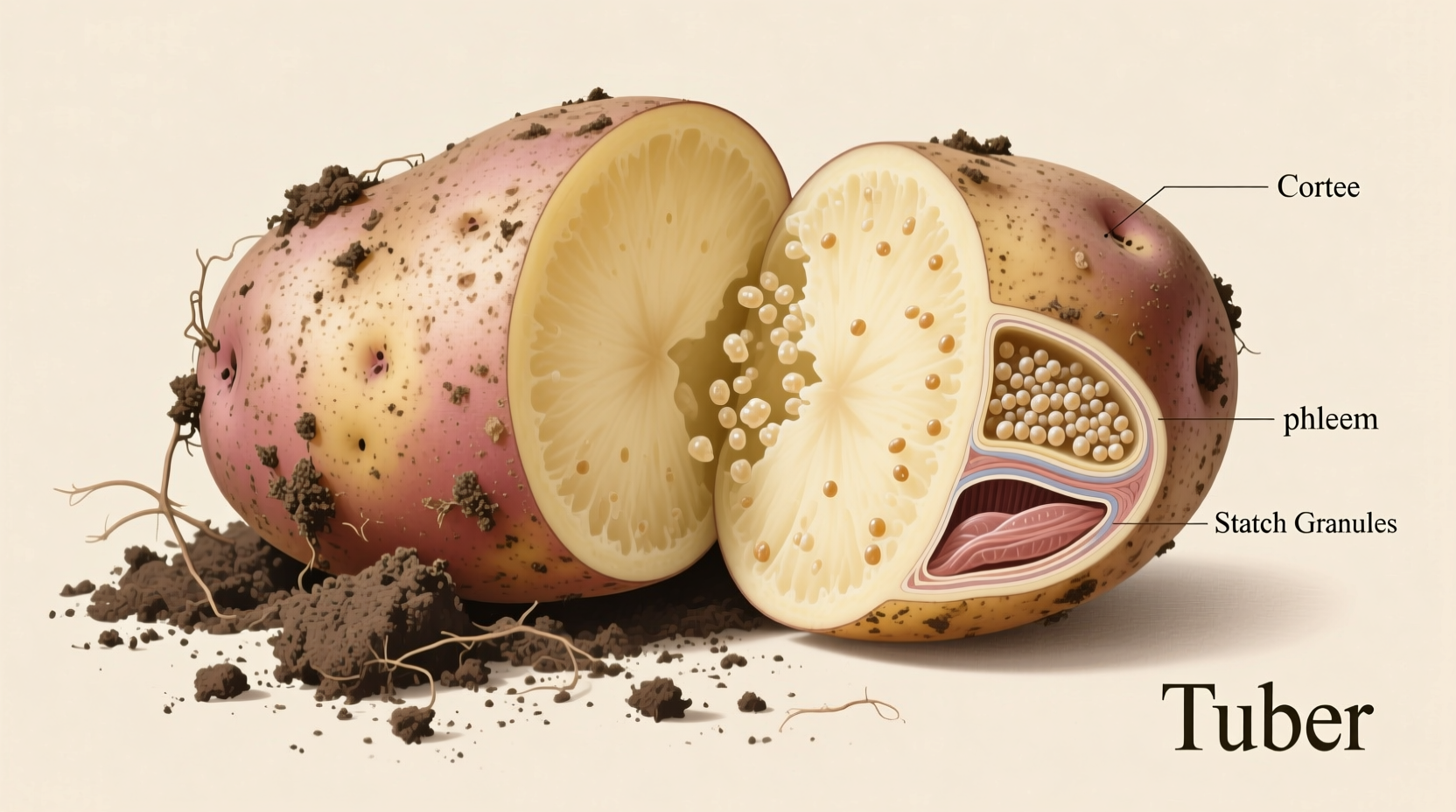When you're planning meals or managing dietary needs, understanding vegetable classifications matters more than you might think. Potatoes sit in a unique nutritional space that often causes confusion among health-conscious eaters and those managing conditions like diabetes. Let's clear up the confusion with science-backed facts you can actually use in your daily food decisions.
What Makes a Vegetable "Starchy"?
Vegetables earn the "starchy" label based on their carbohydrate composition. Starchy vegetables contain significantly higher amounts of carbohydrates—primarily in the form of starch—compared to non-starchy varieties. According to the USDA FoodData Central, a medium potato (about 150g) contains approximately 26 grams of carbohydrates, with 22 grams coming from starch.
Starch serves as the plant's energy storage mechanism. In potatoes, this starch exists in granular form within the plant cells. When you cook potatoes, these granules absorb water and swell, which is why mashed potatoes become creamy while roasted potatoes develop that satisfying crisp exterior.
| Vegetable Type | Carbohydrates per 100g | Primary Nutrients | Common Examples |
|---|---|---|---|
| Starchy Vegetables | 15-25g | Carbohydrates, Potassium, Vitamin C | Potatoes, corn, peas, winter squash |
| Non-Starchy Vegetables | 1-7g | Fiber, Vitamins A & K, Antioxidants | Broccoli, spinach, peppers, mushrooms |
Nutritional Profile: Why Potatoes Stand Out
Potatoes offer more than just starch. They're a good source of potassium (more than bananas by weight), vitamin C, and dietary fiber—especially when you eat the skin. The Dietary Guidelines for Americans specifically categorize potatoes in the starchy vegetable subgroup, recognizing their distinct nutritional contribution compared to other vegetables.
What many people don't realize is that the glycemic impact of potatoes varies significantly based on preparation method. Boiled potatoes with skin have a lower glycemic index (56) compared to mashed potatoes (73) or instant mashed potatoes (87), according to research published in the American Journal of Clinical Nutrition. This explains why preparation method matters more than the vegetable classification itself for blood sugar management.

How Dietary Guidelines Classify Potatoes
The evolution of potato classification in dietary recommendations reveals interesting shifts in nutritional understanding. In the 1990s, potatoes were often grouped with bread and grains in food pyramids. By 2005, the USDA began distinguishing between starchy and non-starchy vegetables in MyPyramid. The current MyPlate guidelines explicitly list potatoes in the starchy vegetable category while acknowledging their nutritional value.
This classification affects practical meal planning. When building a balanced plate using the MyPlate method, starchy vegetables like potatoes occupy the same category as grains. This means if you're eating potatoes, you'd typically reduce your grain portion to maintain appropriate carbohydrate balance.
Common Misconceptions About Potatoes
"Potatoes are just empty calories" is a persistent myth that ignores their nutrient density. A medium potato with skin provides about 45% of your daily vitamin C needs and 620mg of potassium—more than 15% of your recommended daily intake. The Academy of Nutrition and Dietetics emphasizes that potatoes' nutritional value depends largely on preparation method rather than the vegetable itself.
Another misconception suggests that sweet potatoes aren't starchy. While sweet potatoes contain more fiber and vitamin A, they still qualify as starchy vegetables with approximately 20g of carbohydrates per medium potato. The difference lies in their nutrient profile rather than their fundamental classification.
Practical Tips for Including Potatoes in Your Diet
Understanding that potatoes are starchy vegetables helps you make smarter choices:
- Balance portions: Treat a medium potato (about 150g) as equivalent to one slice of bread in your meal planning
- Maximize nutrients: Always eat the skin where most fiber and nutrients reside
- Manage blood sugar: Pair potatoes with protein and healthy fats to slow glucose absorption
- Vary preparation: Choose boiling or roasting over frying to maintain nutritional benefits
- Consider timing: Eat potatoes earlier in the day when your activity level can utilize the energy
Registered dietitians often recommend treating potatoes as a carbohydrate source rather than a vegetable serving when planning meals for specific health conditions. This practical approach acknowledges their starchy nature while still valuing their nutritional contribution.
Final Thoughts on Potato Classification
Recognizing potatoes as starchy vegetables isn't about labeling them "good" or "bad"—it's about understanding their nutritional role in your diet. When you know potatoes function more like grains than leafy greens in your meal composition, you can make informed choices that support your health goals. Whether you're managing diabetes, watching your weight, or simply trying to eat more balanced meals, this classification provides valuable context for smarter food decisions.
Are potatoes considered vegetables in dietary guidelines?
Yes, potatoes are classified as vegetables in dietary guidelines, specifically within the starchy vegetable subgroup. The USDA MyPlate guidelines include potatoes in the vegetable group but distinguish them from non-starchy vegetables due to their higher carbohydrate content.
How do potatoes differ nutritionally from non-starchy vegetables?
Potatoes contain significantly more carbohydrates (15-25g per 100g) compared to non-starchy vegetables (1-7g per 100g). While both provide vitamins and minerals, starchy vegetables like potatoes offer more energy-providing carbohydrates, whereas non-starchy vegetables typically provide more fiber and certain vitamins like A and K.
Can I eat potatoes if I have diabetes?
Yes, but portion control and preparation method matter. A medium potato contains about 30g of carbohydrates, similar to two slices of bread. People with diabetes should treat potatoes as a carbohydrate serving rather than a vegetable serving, pair them with protein and healthy fats, and choose preparation methods like boiling with skin rather than frying to minimize blood sugar impact.
Are sweet potatoes also starchy vegetables?
Yes, sweet potatoes are also classified as starchy vegetables. While they contain more fiber and vitamin A than white potatoes, they still have approximately 20g of carbohydrates per medium potato, placing them in the same nutritional category as other starchy vegetables.











 浙公网安备
33010002000092号
浙公网安备
33010002000092号 浙B2-20120091-4
浙B2-20120091-4